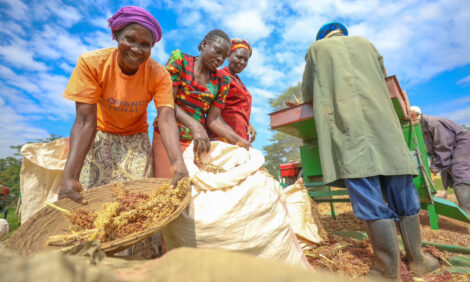



Molecular Epidemiology of Campylobacter Isolates from Poultry Production Units in Southern Ireland
There are multiple sources from which Campylobacter can be transmitted on broiler farms and following their introduction into broiler flocks, the spread of Campylobacter is influenced by many host and environmental factors, including thinning, according to researchers in the Irish Republic.Emer O'Mahony of University College Dublin and co-authors there and at Cork County Council and Teagasc Food Research Centre have reported their study aimed to identify the sources and routes of transmission of Campylobacter in intensively reared poultry farms in the Republic of Ireland in a recent issue of PLoS One.
The scientists explain that breeder flocks and their corresponding broilers housed in three growing facilities were screened for the presence of Campylobacter species from November 2006 to September 2007.
All the breeder flocks tested positive for Campylobacter species (with C. jejuni and C. coli being identified). Similarly, all broiler flocks also tested positive for Campylobacter by the end of the rearing period.
Faecal and environmental samples were analyzed at regular intervals throughout the rearing period of each broiler flock. Campylobacter was not detected in the disinfected house, or in one-day old broiler chicks. C. jejuni was isolated from environmental samples including air, water puddles, adjacent broiler flocks and soil.
A representative subset of isolates from each farm was selected for further characterisation using flaA-SVR sub-typing and multi-locus sequence typing (MLST) to determine if same-species isolates from different sources were indistinguishable or not. Results obtained suggest that no evidence of vertical transmission existed and that adequate cleaning/disinfection of broiler houses contributed to the prevention of carry-over and cross-contamination. Nonetheless, the environment appears to be a potential source of Campylobacter. The population structure of Campylobacter isolates from broiler farms in Southern Ireland was diverse and weakly clonal.
In this study, Campylobacter was not isolated from one broiler flock until after the process of partial depopulation or thinning had been carried out, which confirms previous work showing that the practice of thinning has previously been reported as an important risk factor for Campylobacter colonisation of the residual birds.
O'Mahoney and co-authors concluded that there are multiple sources from which Campylobacter can be transmitted on broiler farms. Following their introduction into broiler flocks, the spread of Campylobacter is influenced by various host and environmental factors, such biosecurity measures in place, farming practices, the immune status of the chickens, and the presence of other animals on the farm.
A combined protocol individually targeting each potential source and route of transmission is required as a logical approach to reduce effectively the colonisation of broiler chickens with Campylobacter in a step-wise fashion, the researchers added.
Reference
O'Mahony E., J.F. Buckley, D. Bolton, P. Whyte and S Fanning. 2011. Molecular epidemiology of Campylobacter isolates from poultry production units in Southern Ireland. PLoS ONE 6(12):e28490. doi:10.1371/journal.pone.0028490
Further Reading
| - | You can view the full report by clicking here. |
December 2011








